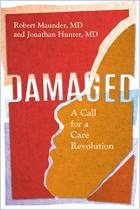Join getAbstract to access the summary!

Join getAbstract to access the summary!
Glenn R. Schiraldi
The Post-Traumatic Stress Disorder Sourcebook
A Guide to Healing, Recovery and Growth
McGraw-Hill, 2000
What's inside?
Post-traumatic stress disorder is a grievous affliction but, fortunately, treatment exists and recovery is possible.
Recommendation
Some people’s lives are picture-perfect, filled with sunny days, starry nights and happy weekends. The good times just keep on coming. For post-traumatic stress disorder (PTSD) victims, things also go on forever. Over and over, they mentally relive their most traumatic experiences in a continuing nightmare. PTSD is insidious. First you are the victim of severe, unspeakable trauma. Then, like a ghost, the trauma comes back to haunt you. Many associate PTSD only with combat veterans. However, almost any severe, stressful event can cause PTSD, be it rape or assault, abuse, a natural disaster, a terrorist attack or an accident. PTSD is a deadly, serious problem that plagues its victims. Fortunately, it does not have to be a life sentence. Treatment is available and recovery is possible, as Glenn R. Schiraldi explains in this thorough sourcebook. In fact, he states firmly that PTSD is curable with the proper therapies. If you or someone you care about suffers from PTSD, getAbstract thinks this book could be useful, helpful and encouraging.
Summary
About the Author
Glenn R. Schiraldi, Ph.D., is an expert on anxiety, stress, depression and anger. He has written numerous books on these topics. He is a former faculty member at the University of Maryland and he worked on stress management at the Pentagon.





















Comment on this summary